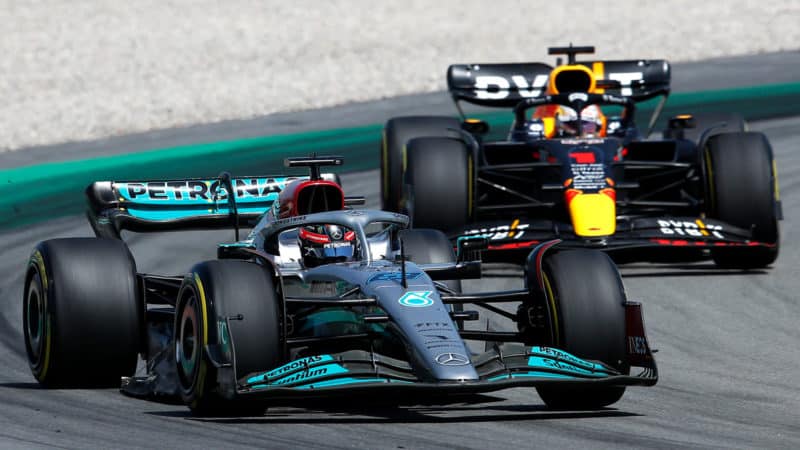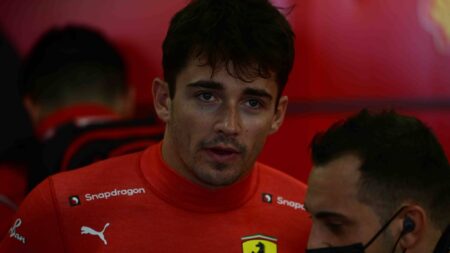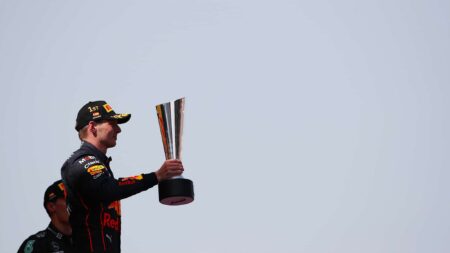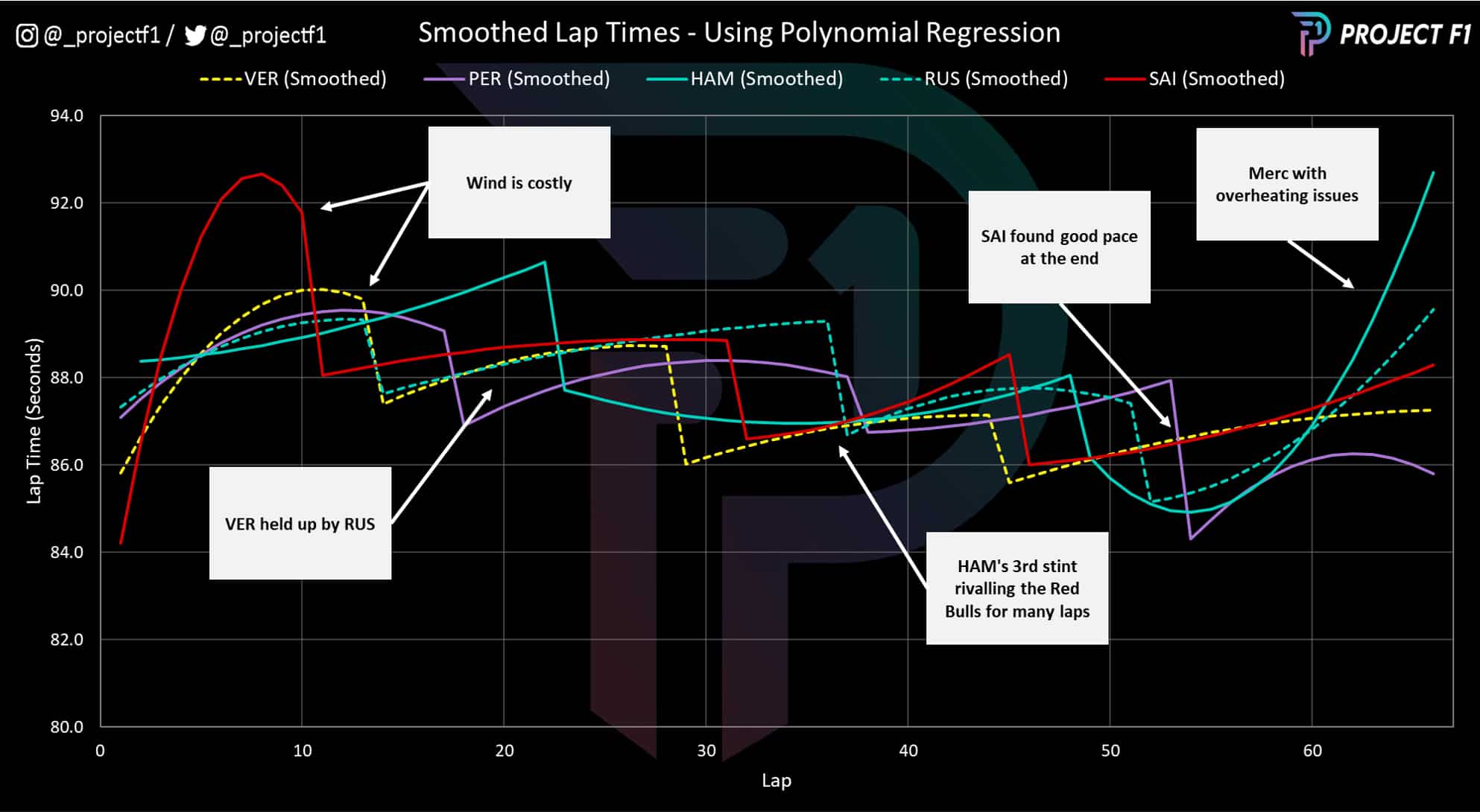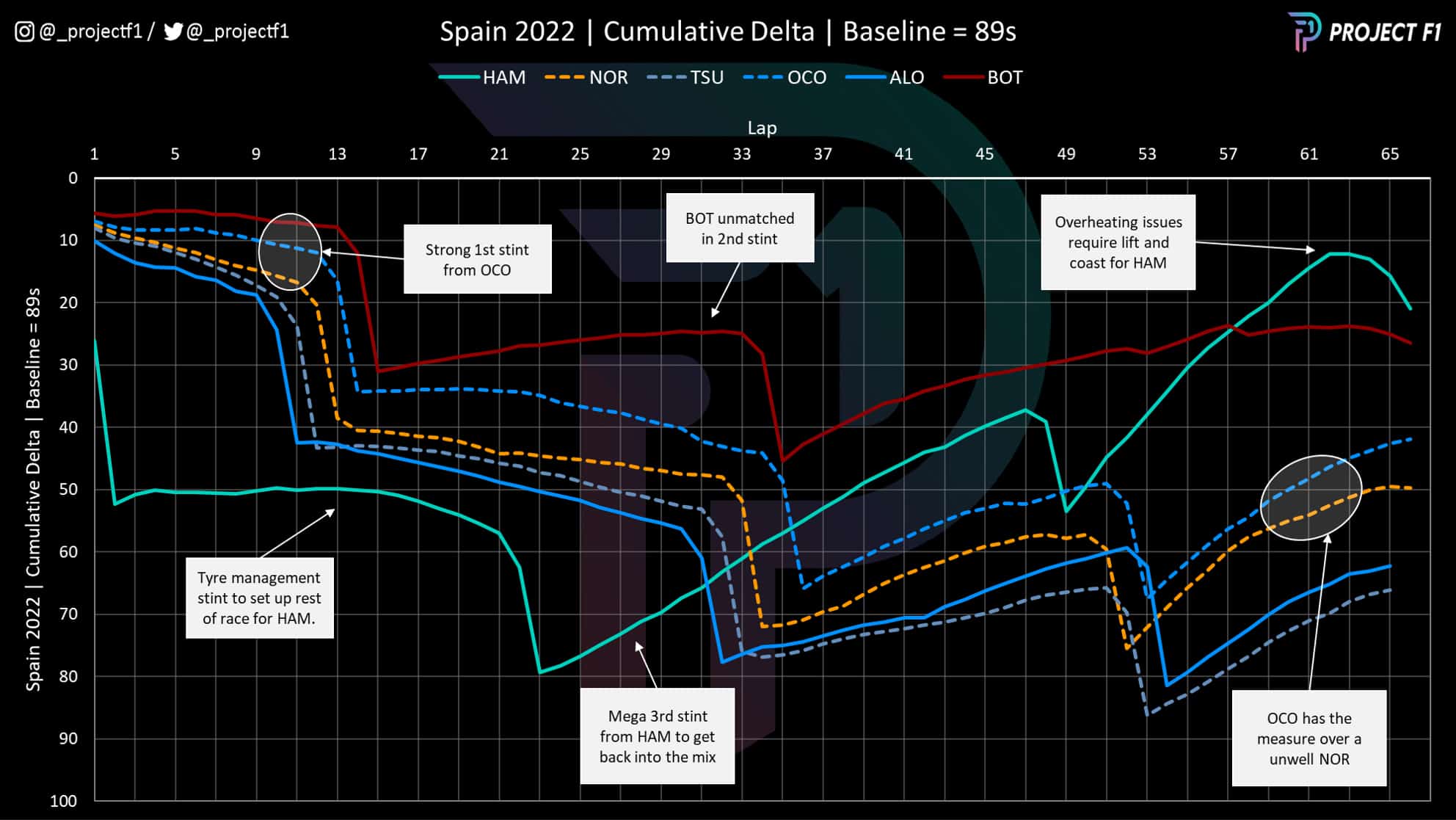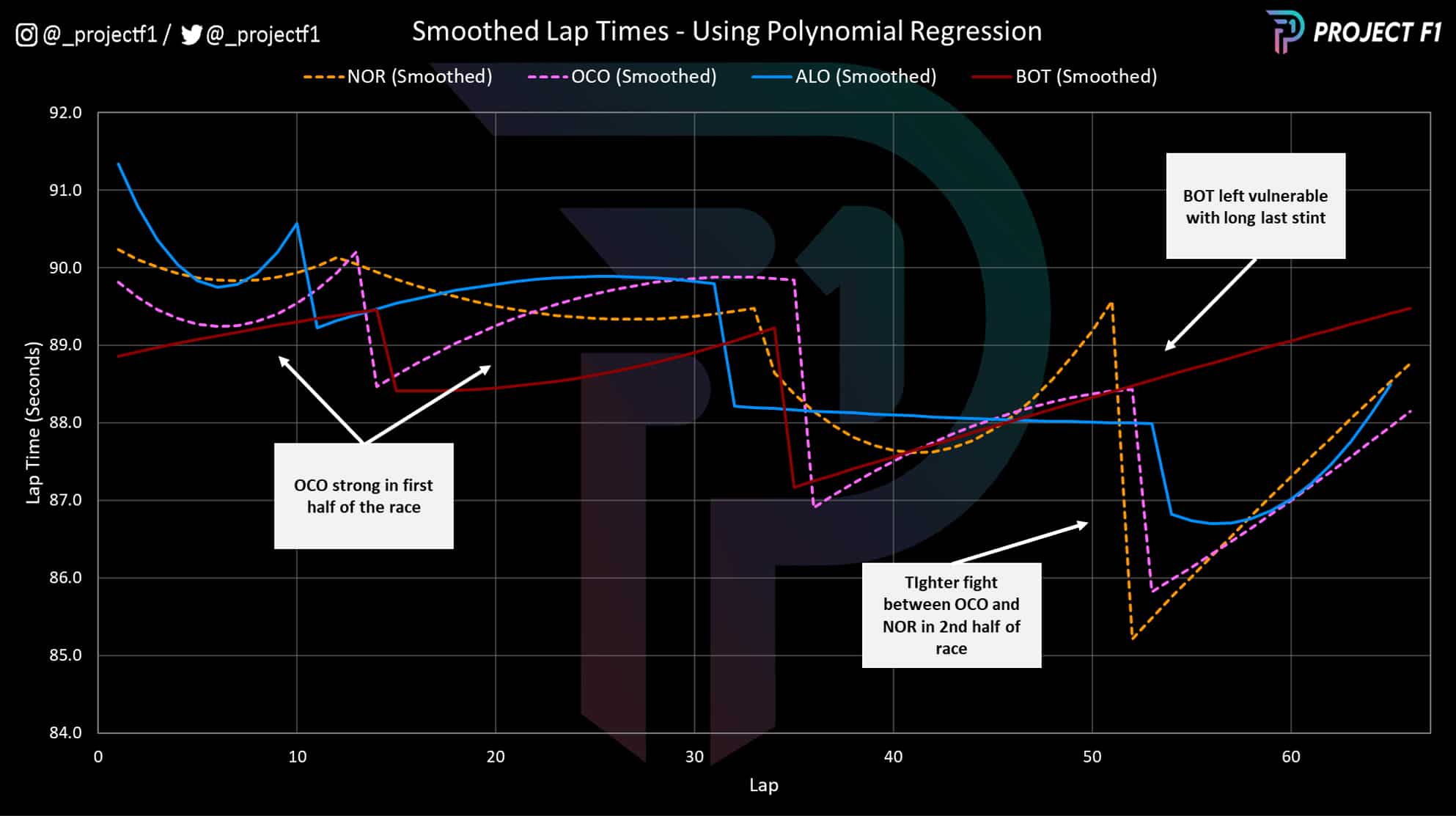Lewis Hamilton immediately lags way behind, as his lap 1 clash and subsequent pitstop for a puncture slows his average time. During the first stint, the line is flat as he hunkers down for a phase of tyre management to set himself up for an aggressive third and fourth stint, which brings his average lap time tumbling, putting him back in the fight with the Ferrari of Sainz.
At the front, Charles Leclerc and Max Verstappen pull away from George Russell, with Perez in fourth unable to make it past the Mercedes.
Then the blustery Turn 4 catches out Sainz and Verstappen; the Red Bull driver dropping back behind Russell. The Mercedes is clearly holding up the defending champion, but Russell’s ability to maintain position indicates the car’s potential, both in its its pace through the tight and twisty sector three and along the long main straight: a proof point that Mercedes has taken a step forward in its issues with drag.
The caveat is that Verstappen was hampered by an intermittent issue with his DRS flap. The benefit of his early second stop, committing himself to a three-stop strategy, is shown in the data: the Red Bull’s average lap time tumbles and he pulls away from Russell in clear air.
Charts 2&3: Race pace on soft/medium tyres
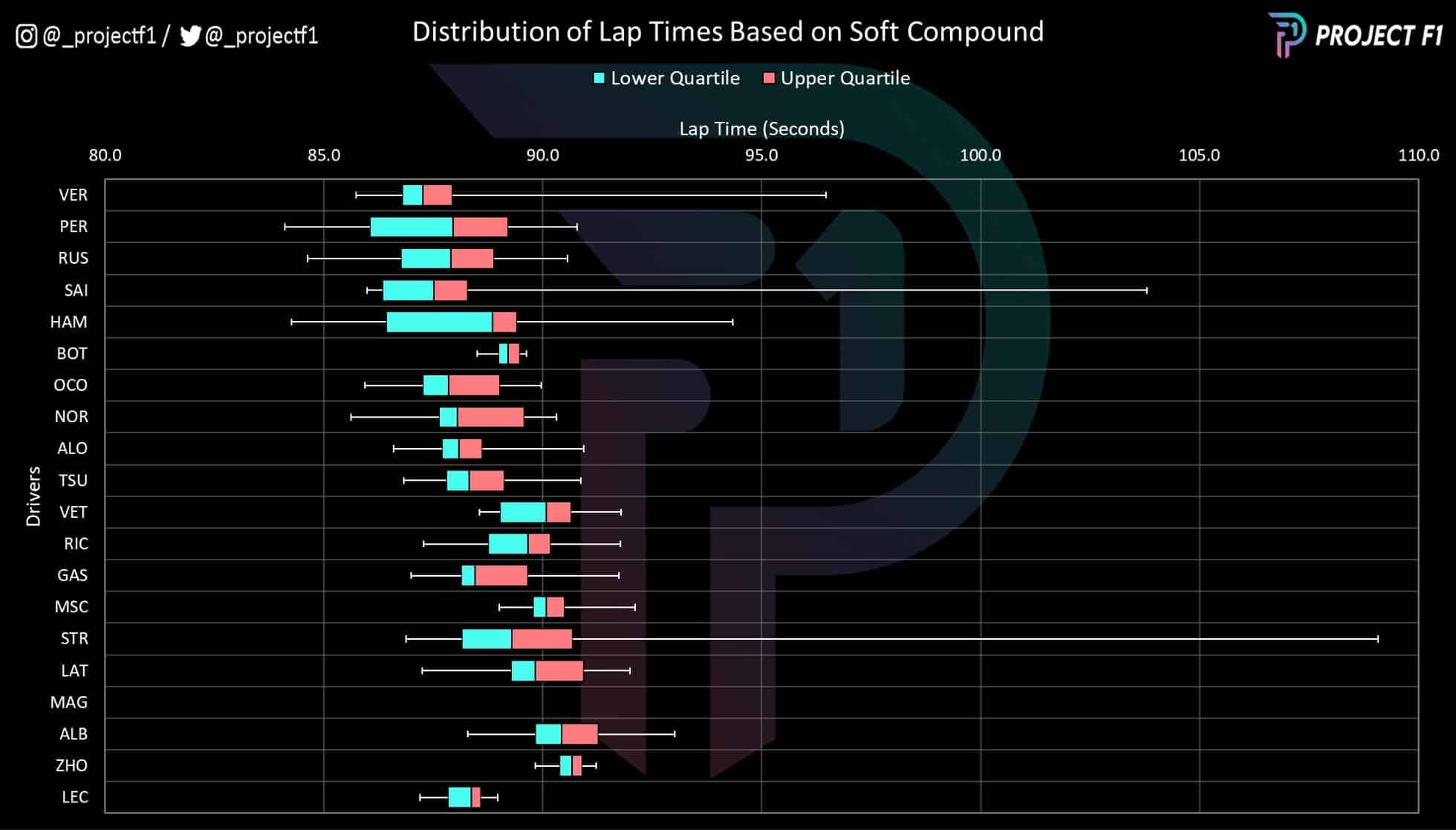
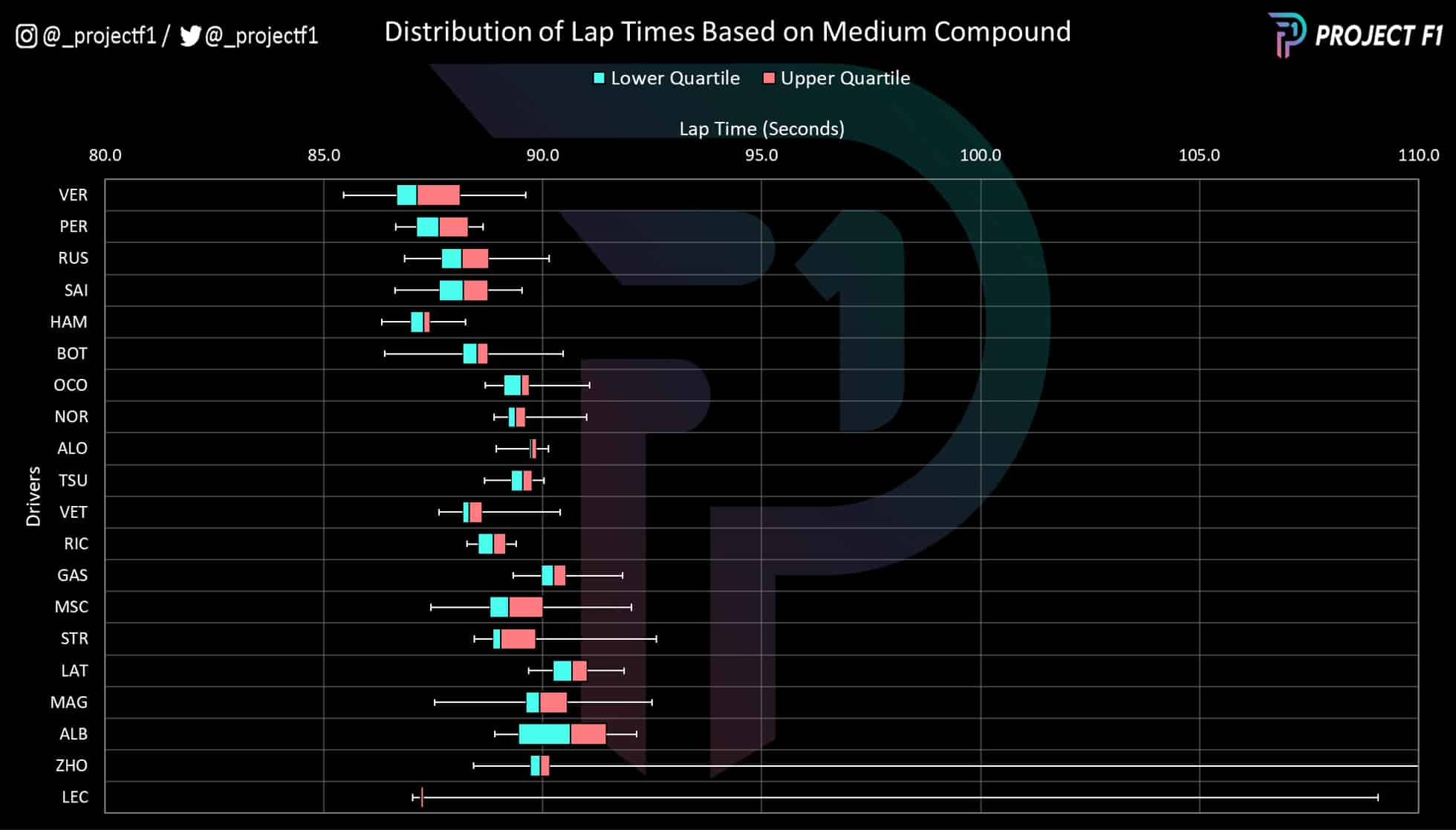
Comparing the lap times set on both soft and medium tyre compounds (only Magnussen used the hard) helps to show pace and degradation. Here, Russell’s performance on the soft compound was on par, if not, slightly better than that of Perez.
However it is worth noting that Perez had gone longer on the first two stints and had to sacrifice some pace in order to the optionality of a 2-stop strategy open.
Regardless of this, the headline pace of the Mercedes from a good qualifying position was impressive – and certainly enough to put the cars up there with the front two teams.
While Hamilton’s pace is further off and closer to that of the midfield on soft tyres, it’s worth putting this in the context of the early impact in the race and his slower first stint.
His medium-tyre pace is a match for Verstappen, which team boss Toto Wolff may have had in mind when he said that Hamilton could have been in line for the victory.
Chart 4: Tyre Strategy
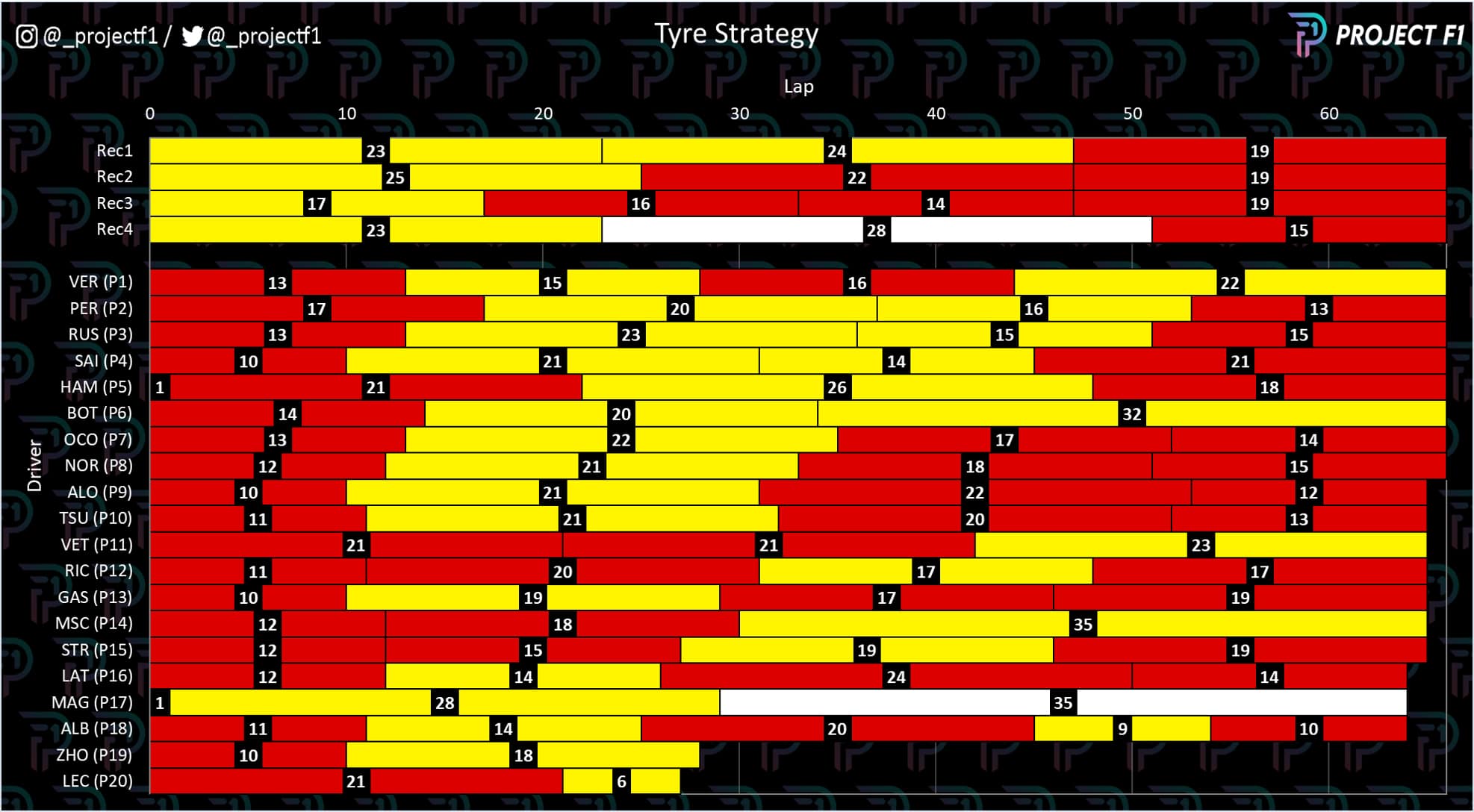
Pirelli’s recommended strategies are shown at the top of the chart and were almost universally ignore by the teams, who largely started their cars on soft (red) tyres and opted for a three-stop race.
